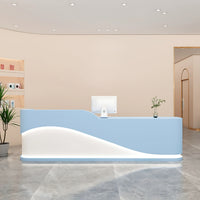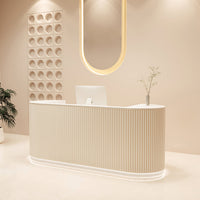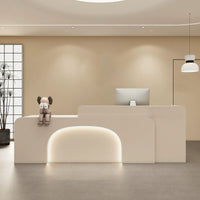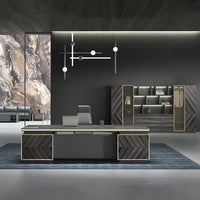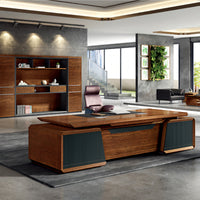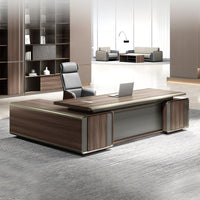Office Sofa vs. Office Chair: Which Is Better for Collaborative Spaces?
kaguyasuContent Menu
● Understanding Collaborative Spaces in the Workplace
>> What Are Collaborative Spaces?
>> Importance of Seating in Collaborative Spaces
● Office Sofas in Collaborative Spaces
>> Benefits of Office Sofas
>> Challenges of Office Sofas
● Office Chairs in Collaborative Spaces
>> Benefits of Office Chairs
>> Challenges of Office Chairs
● Comparing Office Sofas and Office Chairs for Collaborative Spaces
● How to Choose Between Office Sofas and Office Chairs
>> Consider the Nature of Collaboration
>> Evaluate Space Constraints
>> Blend Both for Optimal Results
● Enhancing Collaborative Spaces Beyond Seating
>> Incorporating Technology
>> Prioritizing Employee Well-being
>> Designing for Inclusivity
● Frequently Asked Questions
In the evolving landscape of modern workplaces, creating effective collaborative spaces is essential for fostering teamwork, creativity, and employee well-being. One of the key decisions in designing these spaces is choosing the right seating. Two popular options are office sofas and office chairs. Both have distinct advantages and challenges when it comes to supporting collaboration. This article explores the benefits and drawbacks of office sofas and office chairs in collaborative environments, helping organizations make informed choices to optimize their office design.

Understanding Collaborative Spaces in the Workplace
What Are Collaborative Spaces?
Collaborative spaces are designed areas within an office where employees can come together to share ideas, work on projects, and engage in informal or formal meetings. Unlike traditional cubicles or individual offices, these spaces emphasize openness, flexibility, and comfort to encourage interaction and teamwork.
Importance of Seating in Collaborative Spaces
Seating plays a crucial role in determining how comfortable and inviting a collaborative space feels. It affects not only physical comfort but also the dynamics of communication and creativity. The right seating can promote relaxed yet productive interactions, while poor seating choices may hinder collaboration and reduce employee satisfaction.
Office Sofas in Collaborative Spaces
Benefits of Office Sofas
1. Promotes Comfort and Relaxation
Office sofas provide a comfortable seating option that encourages employees to relax and engage in informal discussions. Their ergonomic design, often featuring cushioned seats and supportive backs, helps reduce physical stress during long collaborative sessions. This comfort can lead to increased creativity and more open communication among team members.
2. Fosters a Sense of Community
Sofas naturally invite people to sit together in a more casual setting, breaking down hierarchical barriers that traditional desks and chairs might impose. This arrangement encourages spontaneous conversations and stronger interpersonal connections, which are vital for teamwork.
3. Enhances Aesthetic Appeal
Modern office sofas come in stylish designs that can elevate the overall look of a workspace. A well-chosen sofa can make collaborative areas more inviting and visually appealing, contributing to a positive office culture.
4. Flexible Configurations
Modular sofas can be arranged in various layouts to suit different team sizes and activities. Some designs include integrated work surfaces and storage, creating semi-private zones that balance interaction with focus.
Challenges of Office Sofas
1. Space Consumption
Sofas typically require more floor space than individual chairs, which can be a limitation in smaller offices or areas where maximizing seating capacity is essential.
2. Formality and Functionality
While sofas are excellent for informal collaboration, they may lack the formality needed for certain meetings or professional settings. They might not support tasks that require a desk or table surface as effectively as chairs paired with desks.
Office Chairs in Collaborative Spaces
Benefits of Office Chairs
1. Ergonomic Support for Focused Work
Office chairs are designed to provide ergonomic support for prolonged sitting, allowing employees to maintain good posture and reduce fatigue. Adjustable features such as height, lumbar support, and armrests help tailor comfort to individual needs.
2. Versatility and Mobility
Chairs are generally more compact and easier to move than sofas, enabling quick reconfiguration of collaborative spaces to accommodate different group sizes and activities. This flexibility is valuable in dynamic work environments.
3. Supports Formal and Informal Collaboration
Paired with desks or tables, office chairs facilitate both casual brainstorming and structured meetings. They provide a practical seating solution for tasks that require writing, typing, or using laptops.
Challenges of Office Chairs
1. Less Inviting for Informal Interaction
Chairs arranged around desks can create a more formal atmosphere, which might inhibit spontaneous conversations and relaxed collaboration. The physical separation of individuals can sometimes feel isolating.
2. Potential for Discomfort in Long Sessions
Despite ergonomic designs, sitting in chairs for extended periods without breaks can lead to discomfort and decreased engagement. This is especially true if the chairs are not well-maintained or properly adjusted.
Comparing Office Sofas and Office Chairs for Collaborative Spaces
| Feature | Office Sofa | Office Chair |
|---|---|---|
| Comfort | High comfort, encourages relaxation | Ergonomic for focused work |
| Space Efficiency | Requires more space | Compact and space-saving |
| Flexibility | Modular options, less mobile | Highly mobile and reconfigurable |
| Formality | Casual, informal setting | Supports formal and informal use |
| Encourages Interaction | Promotes casual, spontaneous chats | Can feel more formal and separated |
| Aesthetic Impact | Enhances office ambiance | Functional, less impact on decor |
How to Choose Between Office Sofas and Office Chairs
Consider the Nature of Collaboration
If your workspace emphasizes informal brainstorming, creativity, and social interaction, office sofas can create a welcoming environment that encourages these behaviors. For more task-oriented collaboration requiring focus and individual work, office chairs paired with desks might be more appropriate.
Evaluate Space Constraints
In offices with limited space, chairs offer greater flexibility and efficiency. Sofas are better suited for larger areas where comfort and aesthetics are priorities.
Blend Both for Optimal Results
Many modern offices benefit from combining both seating types. Sofas can be placed in lounge or breakout areas for informal meetings, while chairs serve conference rooms and workstations for structured collaboration.
Enhancing Collaborative Spaces Beyond Seating
Incorporating Technology
To support hybrid and remote collaboration, integrating technology such as video conferencing tools and digital whiteboards is essential. Seating arrangements should complement these technologies by ensuring visibility and accessibility for all participants.
Prioritizing Employee Well-being
Comfortable seating is part of a broader strategy to improve employee well-being. Providing options that allow movement and posture changes throughout the day can reduce fatigue and boost productivity.
Designing for Inclusivity
Inclusive design considers diverse needs, including accessibility and privacy. Adjustable chairs and modular sofas with dividers can accommodate different preferences and work styles.
Frequently Asked Questions
1. Can office sofas replace office chairs entirely in collaborative spaces?
While office sofas offer comfort and encourage informal interaction, they are not ideal for all collaborative tasks. A mix of sofas and chairs usually provides the best balance.
2. How do office sofas impact productivity compared to chairs?
Sofas promote relaxation and creativity, which can enhance brainstorming sessions, but chairs support focused work better. Productivity depends on matching seating to the activity.
3. Are office sofas suitable for small office spaces?
Due to their larger footprint, sofas may not be the best choice for small spaces. Compact chairs or modular seating options might be more practical.
4. What ergonomic features should I look for in office chairs for collaboration?
Look for adjustable height, lumbar support, swivel capability, and comfortable cushioning to support various users during collaborative work.
5. How can I create a collaborative space that supports both remote and in-person teams?
Incorporate flexible seating arrangements with technology like video conferencing tools, ensuring all participants can engage equally regardless of location.

[1] https://aceofficesystems.com/blogs/news/how-does-collaborative-lounge-seating-enhance-offices
[2] https://www.steelcase.com/content/uploads/sites/13/2023/06/SC_WB_AP_Magazine_Spring_CN.pdf
[3] https://www.naughtone.com/blog/embrace-office-collaboration-with-collaboration-furniture/
[4] https://www.britishcouncil.org/sites/default/files/kvl-chinese-technical-v1.00.xlsx
[5] https://www.mwworkstation.com/article/benefits-of-office-sofa-in-workspaces.html
[6] https://www.berlitz.com/zh-hans-cn/blog/business-english-vocabulary-phrases
[7] https://www.keyinteriors.us/blog/how-an-office-couch-can-improve-workplace-happiness/
[8] https://tw.amazingtalker.com/blog/zh-tw/zh-eng/10368/
Hot Tags: China, Global, OEM, private label, manufacturers, factory, suppliers, manufacturing company




